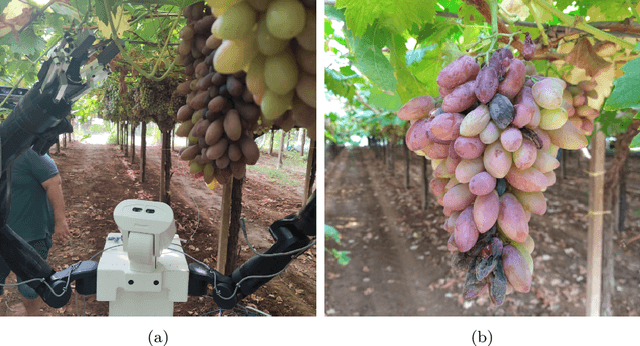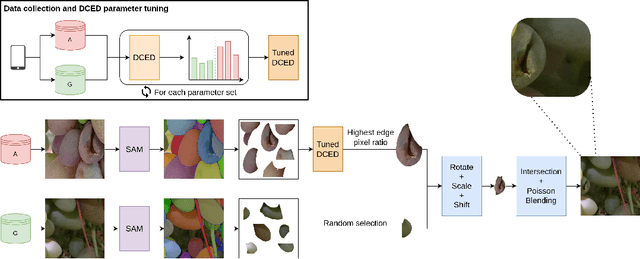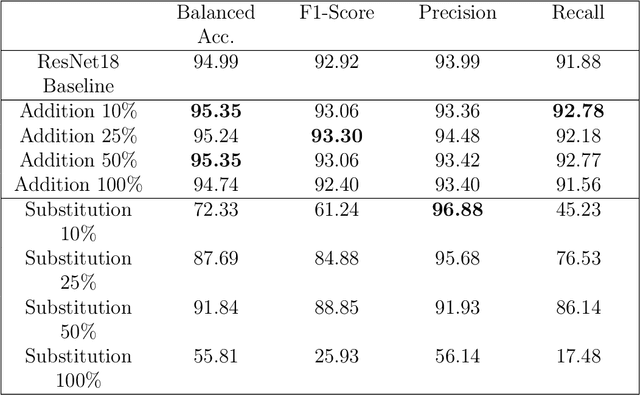Daniele Nardi
Sapienza Università di Roma, Rome, Italy
LOST-3DSG: Lightweight Open-Vocabulary 3D Scene Graphs with Semantic Tracking in Dynamic Environments
Jan 06, 2026Abstract:Tracking objects that move within dynamic environments is a core challenge in robotics. Recent research has advanced this topic significantly; however, many existing approaches remain inefficient due to their reliance on heavy foundation models. To address this limitation, we propose LOST-3DSG, a lightweight open-vocabulary 3D scene graph designed to track dynamic objects in real-world environments. Our method adopts a semantic approach to entity tracking based on word2vec and sentence embeddings, enabling an open-vocabulary representation while avoiding the necessity of storing dense CLIP visual features. As a result, LOST-3DSG achieves superior performance compared to approaches that rely on high-dimensional visual embeddings. We evaluate our method through qualitative and quantitative experiments conducted in a real 3D environment using a TIAGo robot. The results demonstrate the effectiveness and efficiency of LOST-3DSG in dynamic object tracking. Code and supplementary material are publicly available on the project website at https://lab-rococo-sapienza.github.io/lost-3dsg/.
Adversarial Poetry as a Universal Single-Turn Jailbreak Mechanism in Large Language Models
Nov 19, 2025Abstract:We present evidence that adversarial poetry functions as a universal single-turn jailbreak technique for large language models (LLMs). Across 25 frontier proprietary and open-weight models, curated poetic prompts yielded high attack-success rates (ASR), with some providers exceeding 90%. Mapping prompts to MLCommons and EU CoP risk taxonomies shows that poetic attacks transfer across CBRN, manipulation, cyber-offence, and loss-of-control domains. Converting 1,200 MLCommons harmful prompts into verse via a standardized meta-prompt produced ASRs up to 18 times higher than their prose baselines. Outputs are evaluated using an ensemble of open-weight judge models and a human-validated stratified subset (with double-annotations to measure agreement). Disagreements were manually resolved. Poetic framing achieved an average jailbreak success rate of 62% for hand-crafted poems and approximately 43% for meta-prompt conversions (compared to non-poetic baselines), substantially outperforming non-poetic baselines and revealing a systematic vulnerability across model families and safety training approaches. These findings demonstrate that stylistic variation alone can circumvent contemporary safety mechanisms, suggesting fundamental limitations in current alignment methods and evaluation protocols.
Defining and Monitoring Complex Robot Activities via LLMs and Symbolic Reasoning
Sep 19, 2025Abstract:Recent years have witnessed a growing interest in automating labor-intensive and complex activities, i.e., those consisting of multiple atomic tasks, by deploying robots in dynamic and unpredictable environments such as industrial and agricultural settings. A key characteristic of these contexts is that activities are not predefined: while they involve a limited set of possible tasks, their combinations may vary depending on the situation. Moreover, despite recent advances in robotics, the ability for humans to monitor the progress of high-level activities - in terms of past, present, and future actions - remains fundamental to ensure the correct execution of safety-critical processes. In this paper, we introduce a general architecture that integrates Large Language Models (LLMs) with automated planning, enabling humans to specify high-level activities (also referred to as processes) using natural language, and to monitor their execution by querying a robot. We also present an implementation of this architecture using state-of-the-art components and quantitatively evaluate the approach in a real-world precision agriculture scenario.
Curriculum-Based Multi-Tier Semantic Exploration via Deep Reinforcement Learning
Sep 11, 2025Abstract:Navigating and understanding complex and unknown environments autonomously demands more than just basic perception and movement from embodied agents. Truly effective exploration requires agents to possess higher-level cognitive abilities, the ability to reason about their surroundings, and make more informed decisions regarding exploration strategies. However, traditional RL approaches struggle to balance efficient exploration and semantic understanding due to limited cognitive capabilities embedded in the small policies for the agents, leading often to human drivers when dealing with semantic exploration. In this paper, we address this challenge by presenting a novel Deep Reinforcement Learning (DRL) architecture that is specifically designed for resource efficient semantic exploration. A key methodological contribution is the integration of a Vision-Language Model (VLM) common-sense through a layered reward function. The VLM query is modeled as a dedicated action, allowing the agent to strategically query the VLM only when deemed necessary for gaining external guidance, thereby conserving resources. This mechanism is combined with a curriculum learning strategy designed to guide learning at different levels of complexity to ensure robust and stable learning. Our experimental evaluation results convincingly demonstrate that our agent achieves significantly enhanced object discovery rates and develops a learned capability to effectively navigate towards semantically rich regions. Furthermore, it also shows a strategic mastery of when to prompt for external environmental information. By demonstrating a practical and scalable method for embedding common-sense semantic reasoning with autonomous agents, this research provides a novel approach to pursuing a fully intelligent and self-guided exploration in robotics.
Multi Robot Coordination in Highly Dynamic Environments: Tackling Asymmetric Obstacles and Limited Communication
Sep 09, 2025Abstract:Coordinating a fully distributed multi-agent system (MAS) can be challenging when the communication channel has very limited capabilities in terms of sending rate and packet payload. When the MAS has to deal with active obstacles in a highly partially observable environment, the communication channel acquires considerable relevance. In this paper, we present an approach to deal with task assignments in extremely active scenarios, where tasks need to be frequently reallocated among the agents participating in the coordination process. Inspired by market-based task assignments, we introduce a novel distributed coordination method to orchestrate autonomous agents' actions efficiently in low communication scenarios. In particular, our algorithm takes into account asymmetric obstacles. While in the real world, the majority of obstacles are asymmetric, they are usually treated as symmetric ones, thus limiting the applicability of existing methods. To summarize, the presented architecture is designed to tackle scenarios where the obstacles are active and asymmetric, the communication channel is poor and the environment is partially observable. Our approach has been validated in simulation and in the real world, using a team of NAO robots during official RoboCup competitions. Experimental results show a notable reduction in task overlaps in limited communication settings, with a decrease of 52% in the most frequent reallocated task.
Bench-2-CoP: Can We Trust Benchmarking for EU AI Compliance?
Aug 07, 2025Abstract:The rapid advancement of General Purpose AI (GPAI) models necessitates robust evaluation frameworks, especially with emerging regulations like the EU AI Act and its associated Code of Practice (CoP). Current AI evaluation practices depend heavily on established benchmarks, but these tools were not designed to measure the systemic risks that are the focus of the new regulatory landscape. This research addresses the urgent need to quantify this "benchmark-regulation gap." We introduce Bench-2-CoP, a novel, systematic framework that uses validated LLM-as-judge analysis to map the coverage of 194,955 questions from widely-used benchmarks against the EU AI Act's taxonomy of model capabilities and propensities. Our findings reveal a profound misalignment: the evaluation ecosystem is overwhelmingly focused on a narrow set of behavioral propensities, such as "Tendency to hallucinate" (53.7% of the corpus) and "Discriminatory bias" (28.9%), while critical functional capabilities are dangerously neglected. Crucially, capabilities central to loss-of-control scenarios, including evading human oversight, self-replication, and autonomous AI development, receive zero coverage in the entire benchmark corpus. This translates to a near-total evaluation gap for systemic risks like "Loss of Control" (0.4% coverage) and "Cyber Offence" (0.8% coverage). This study provides the first comprehensive, quantitative analysis of this gap, offering critical insights for policymakers to refine the CoP and for developers to build the next generation of evaluation tools, ultimately fostering safer and more compliant AI.
Self-Supervised Data Generation for Precision Agriculture: Blending Simulated Environments with Real Imagery
Feb 25, 2025Abstract:In precision agriculture, the scarcity of labeled data and significant covariate shifts pose unique challenges for training machine learning models. This scarcity is particularly problematic due to the dynamic nature of the environment and the evolving appearance of agricultural subjects as living things. We propose a novel system for generating realistic synthetic data to address these challenges. Utilizing a vineyard simulator based on the Unity engine, our system employs a cut-and-paste technique with geometrical consistency considerations to produce accurate photo-realistic images and labels from synthetic environments to train detection algorithms. This approach generates diverse data samples across various viewpoints and lighting conditions. We demonstrate considerable performance improvements in training a state-of-the-art detector by applying our method to table grapes cultivation. The combination of techniques can be easily automated, an increasingly important consideration for adoption in agricultural practice.
Can Robots "Taste" Grapes? Estimating SSC with Simple RGB Sensors
Dec 29, 2024



Abstract:In table grape cultivation, harvesting depends on accurately assessing fruit quality. While some characteristics, like color, are visible, others, such as Soluble Solid Content (SSC), or sugar content measured in degrees Brix ({\deg}Brix), require specific tools. SSC is a key quality factor that correlates with ripeness, but lacks a direct causal relationship with color. Hyperspectral cameras can estimate SSC with high accuracy under controlled laboratory conditions, but their practicality in field environments is limited. This study investigates the potential of simple RGB sensors under uncontrolled lighting to estimate SSC and color, enabling cost-effective, robot-assisted harvesting. Over the 2021 and 2022 summer seasons, we collected grape images with corresponding SSC and color labels to evaluate algorithmic solutions for SSC estimation on embedded devices commonly used in robotics and smartphones. Our results demonstrate that SSC can be estimated from visual appearance with human-like performance. We propose computationally efficient histogram-based methods for resource-constrained robots and deep learning approaches for more complex applications.
Synthetic Data Generation for Anomaly Detection on Table Grapes
Dec 17, 2024



Abstract:Early detection of illnesses and pest infestations in fruit cultivation is critical for maintaining yield quality and plant health. Computer vision and robotics are increasingly employed for the automatic detection of such issues, particularly using data-driven solutions. However, the rarity of these problems makes acquiring and processing the necessary data to train such algorithms a significant obstacle. One solution to this scarcity is the generation of synthetic high-quality anomalous samples. While numerous methods exist for this task, most require highly trained individuals for setup. This work addresses the challenge of generating synthetic anomalies in an automatic fashion that requires only an initial collection of normal and anomalous samples from the user - a task that is straightforward for farmers. We demonstrate the approach in the context of table grape cultivation. Specifically, based on the observation that normal berries present relatively smooth surfaces, while defects result in more complex textures, we introduce a Dual-Canny Edge Detection (DCED) filter. This filter emphasizes the additional texture indicative of diseases, pest infestations, or other defects. Using segmentation masks provided by the Segment Anything Model, we then select and seamlessly blend anomalous berries onto normal ones. We show that the proposed dataset augmentation technique improves the accuracy of an anomaly classifier for table grapes and that the approach can be generalized to other fruit types.
Real-Time Multimodal Signal Processing for HRI in RoboCup: Understanding a Human Referee
Nov 26, 2024


Abstract:Advancing human-robot communication is crucial for autonomous systems operating in dynamic environments, where accurate real-time interpretation of human signals is essential. RoboCup provides a compelling scenario for testing these capabilities, requiring robots to understand referee gestures and whistle with minimal network reliance. Using the NAO robot platform, this study implements a two-stage pipeline for gesture recognition through keypoint extraction and classification, alongside continuous convolutional neural networks (CCNNs) for efficient whistle detection. The proposed approach enhances real-time human-robot interaction in a competitive setting like RoboCup, offering some tools to advance the development of autonomous systems capable of cooperating with humans.
 Add to Chrome
Add to Chrome Add to Firefox
Add to Firefox Add to Edge
Add to Edge